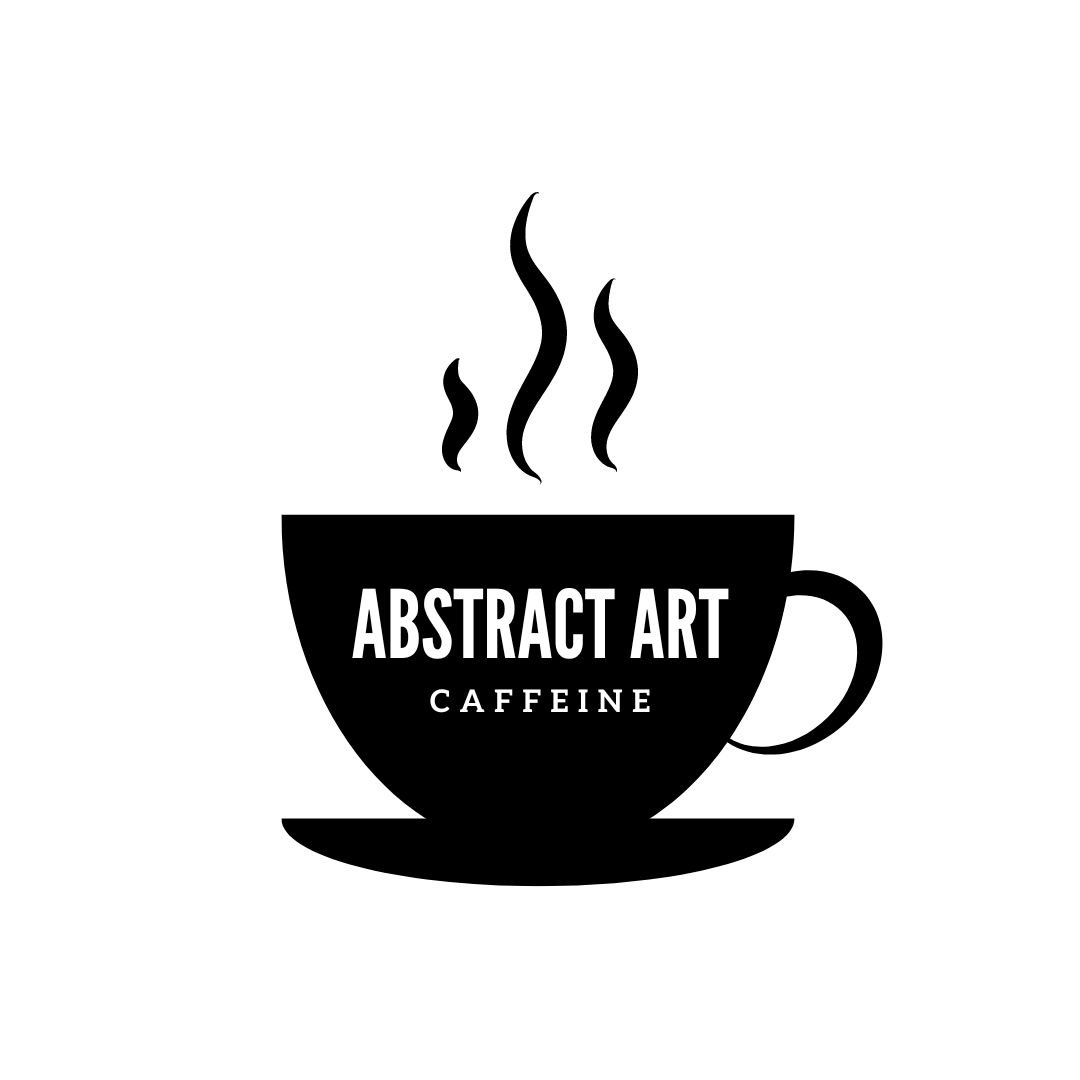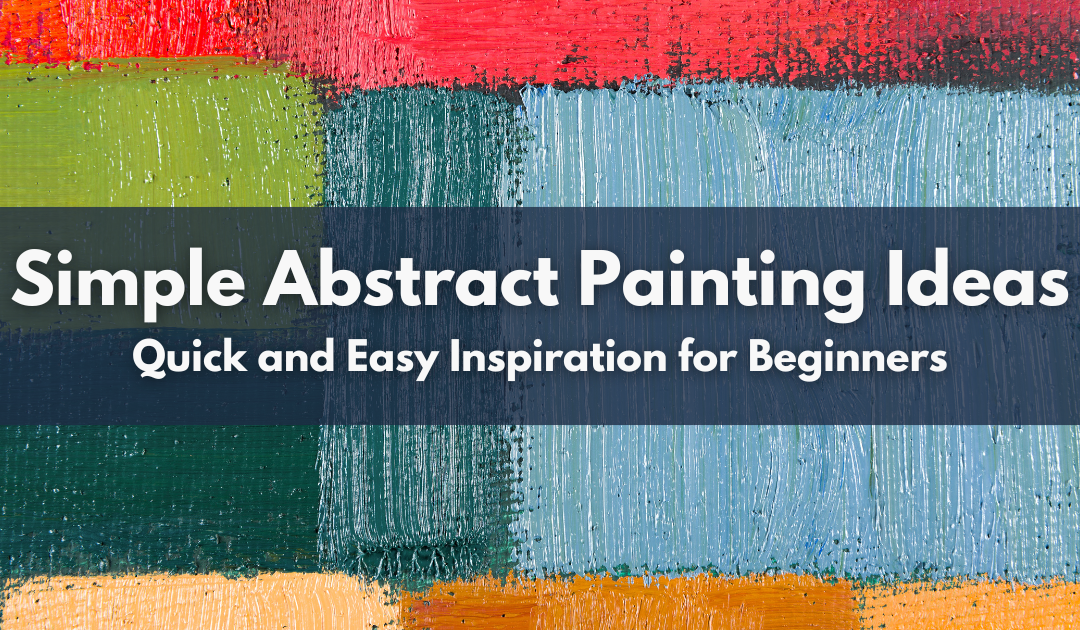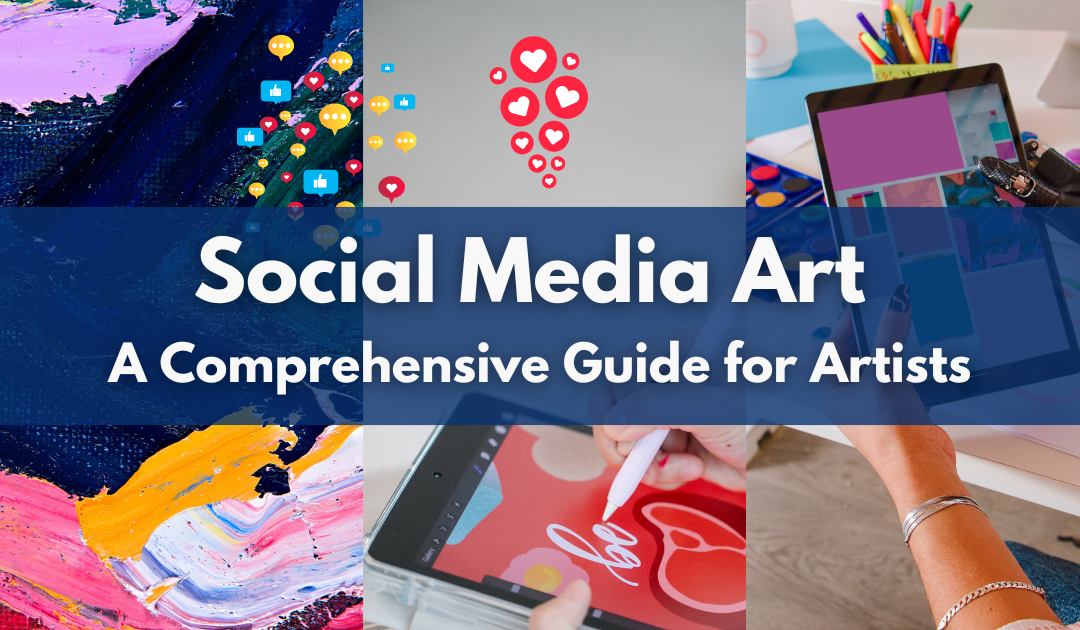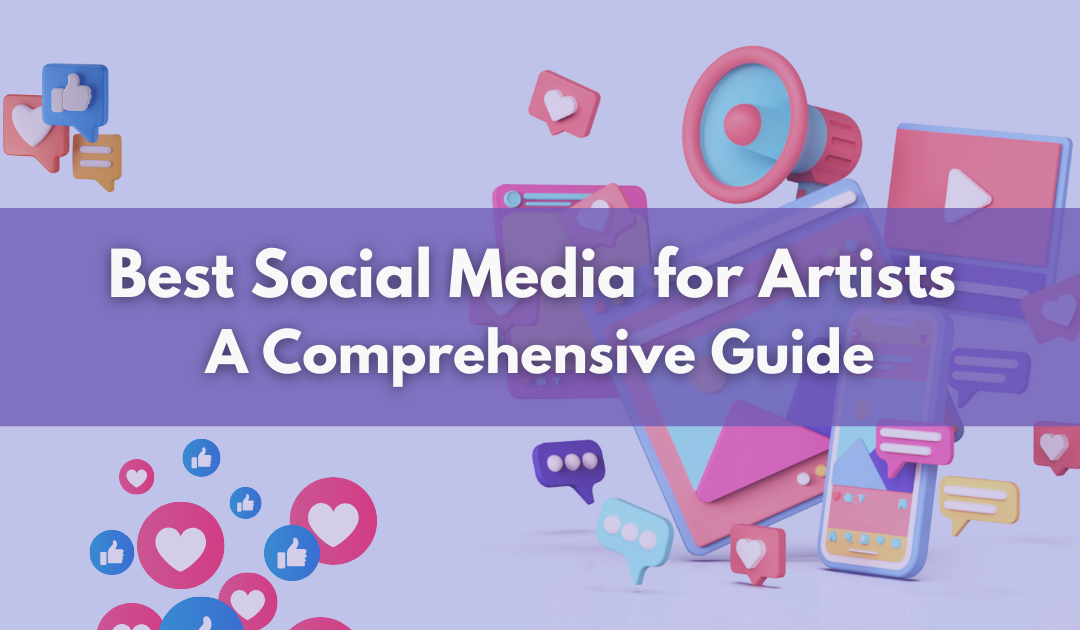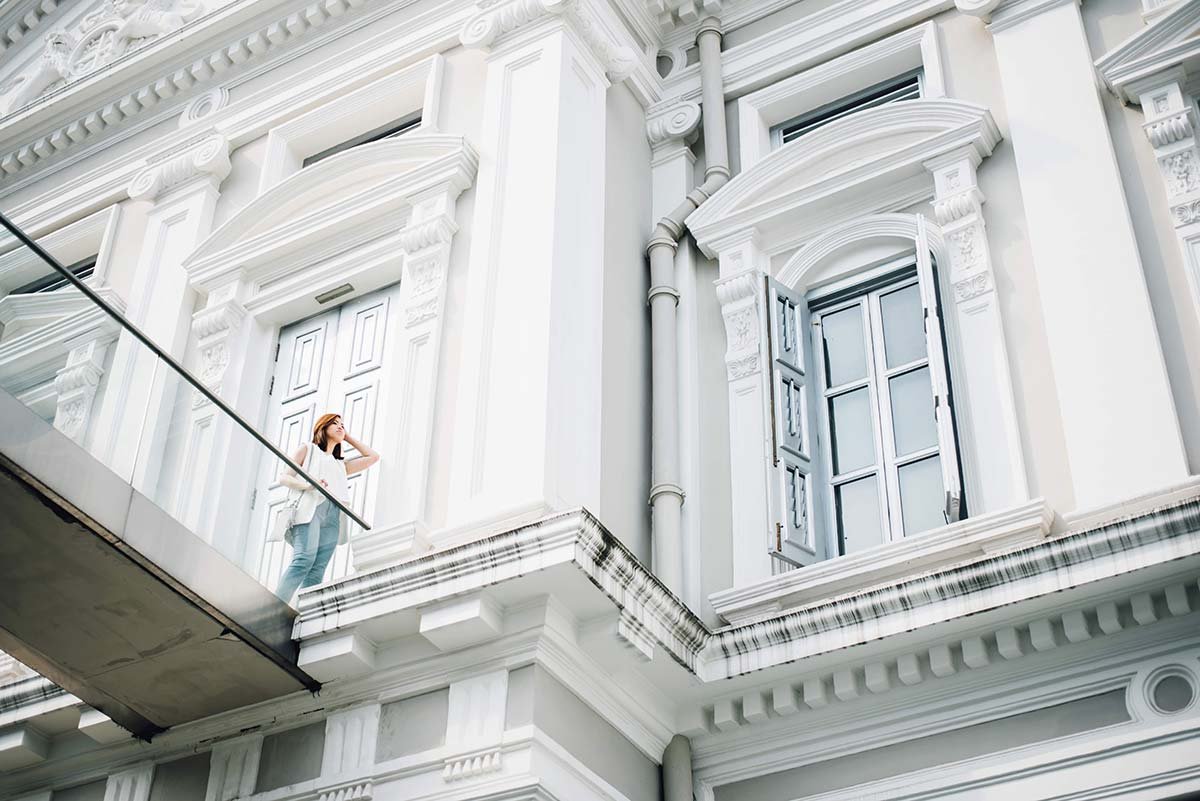Hello, Artist. Do you need help with names for abstract art?
Are you looking at your latest masterpiece, scratching your head, and wondering how on earth to name it?
Don’t worry, you’re not alone.
The process of choosing names for abstract art can be as challenging as creating the artwork itself. Many artists, both seasoned professionals and beginners, have faced this same struggle.
But don’t get upset.
We’re about to embark on a colorful journey through the world of art titles. By the end, you’ll have a whole new perspective on naming your pieces, and you’ll be doing it with the confidence of a seasoned pro.
Introduction: The Power of a Name
Imagine walking into a gallery and seeing a stunning abstract painting.
It catches your eye, and you’re drawn to it like a moth to a flame. Then you glance at the title, and suddenly, the artwork takes on a whole new meaning. That’s the magic of naming abstract art!

Titles are like secret whispers from the artist to the viewer. They can guide, inspire, or even completely change how someone sees your work. But here’s the tricky part – finding that perfect name can sometimes feel like trying to catch a cloud. It’s elusive, ever-changing, and oh-so-important.
In this blog post, we’ll unravel the mystery of how to title artwork, especially abstract pieces.
Whether you’re a seasoned pro or just starting out, you’ll find tips, tricks, and inspiration to help you name your creations with confidence.
Why Titles Matter in Abstract Art
Titles are not just names, they are the first handshake between your art and its audience. They set the tone, create expectations, and can even spark emotions before the viewer has fully absorbed the visual elements. Understanding this can significantly enhance your art’s impact.
Let’s break down why titles are so crucial:
Influencing Perception
Think of titles as gentle nudges. They can guide viewers towards specific interpretations or emotions without being too heavy-handed.
For instance, a swirl of blue and green might be seen differently if it’s called “Ocean Dreams” versus “Alien Landscape.”
Emotional Connection
A well-chosen title can forge an instant emotional bond between the artwork and the viewer.
It’s like adding a soundtrack to a movie – it enhances the experience and can make it more memorable.

Balancing Act
The best titles for abstract paintings walk a fine line between mystery and clarity.
They offer just enough information to intrigue without giving away the whole story. It’s like leaving breadcrumbs for the viewer’s imagination to follow.
Are One Word Names Best for Abstract Art?
Ah, the million-dollar question! Are one-word names for abstract art the way to go? Well, like most things in art, there’s no one-size-fits-all answer.
Let’s weigh the pros and cons:
Pros
- Simplicity and impact
- Easy to remember
- Leave more room for interpretation
Cons
- Can be too vague
- Might not fully capture the artwork’s essence
- Risk of being overused or cliché

When to Use One Word Titles or Names for Abstract Art
One-word titles or names work best when:
- The artwork has a strong, singular focus
- You want to evoke a specific emotion or concept
- The piece is minimalist or highly abstract
Examples of Effective One Word Abstract Art Titles
- “Composition” by Wassily Kandinsky
- “Broadway” by Piet Mondrian
- “Orange” by Mark Rothko
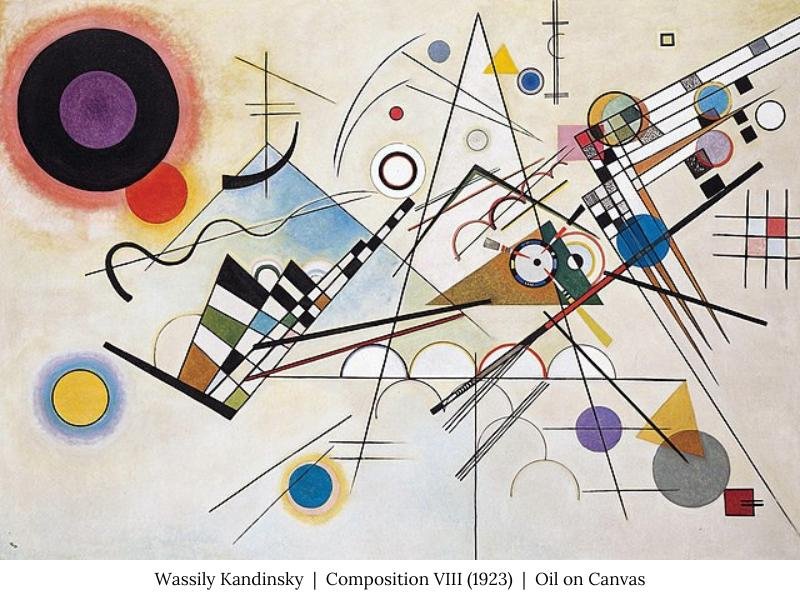
Image Source: Wassily Kandinsky, Public domain, via Wikimedia Commons
These titles are simple yet effective. They allow the viewer to approach the artwork with an open mind while still providing a subtle hint about its nature.
How to Name Your Abstract Art
Now, let’s roll up our sleeves and dive into the nitty-gritty of naming your abstract masterpieces.
Remember, there’s no single “right” way to name Abstract Art – it’s all about finding what resonates with you and your art.

Inspiration Sources
- Visual Cues: Look closely at your artwork. What colors, shapes, or textures stand out? A painting with swirling reds and oranges might inspire a title like “Firestorm” or “Autumn Whirl.”
- Emotions and Themes: What feelings or ideas does your artwork evoke? If it makes you feel peaceful, you might consider titles like “Serenity” or “Calm Reflections.”
- Personal Stories: Did a particular experience or memory inspire your work? Use that as a starting point. A piece inspired by a childhood beach trip could be titled “Sandcastle Memories” or “Tidal Whispers.”
Just like Abstract Art Inspiration, names for abstract art can also be triggered from various sources.
Techniques for Naming
- Descriptive Naming: Use adjectives to describe your artwork’s elements, such as “Fragmented Blue” or “Textured Harmony.”
- Metaphorical Naming: Think abstractly! If your painting reminds you of a concept or idea, use that. “Whisper of Time” or “Echoes of Spring” are examples of metaphorical titles.
- Word Combinations: Get creative by combining words. “Color Quake,” “Shadow Dance,” or “Misty Meadow” are unique titles created by blending words.
How to Title Artwork: A Step-by-Step Guide
- Brainstorm: Set a timer for 5 minutes and write down every word or phrase that comes to mind when you look at your artwork. Don’t judge, just write!
- Refine: Look at your list and circle the words or phrases that resonate most with your piece.
- Combine and Create: Try combining different words or phrases from your list to create unique titles.
- Check for Uniqueness: Do a quick online search to make sure your title isn’t already widely used.
- Sleep on It: Give yourself some time before making a final decision. Sometimes, the perfect title comes to you when you least expect it!
Using Abstract Art Title Generators
In our digital age, even art naming has gone high-tech.
Abstract art title generators can be a fun tool to kickstart your creativity.
Here’s the lowdown:
Pros
– Quick source of ideas
– Can spark unexpected combinations
– Helpful when you’re stuck
Cons
– May produce generic titles
– Lack of personal connection to your work
– Can become a crutch if overused
Recommendations
– ChatGPT
– Appypie
Remember, these tools should be a starting point, not the final word. Use them for inspiration, then put your personal spin on the results.
Catchy Painting Title Ideas
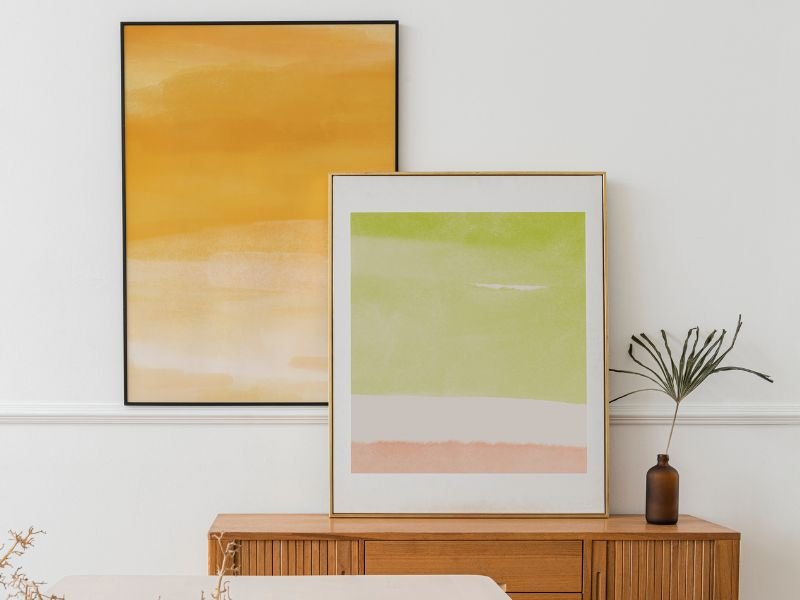
Want your titles to stick in people’s minds?
Here are some ideas to get those creative juices flowing:
- Use alliteration: “Whispering Waves,” “Crimson Cascade”
- Create contrast: “Loud Silence,” “Organized Chaos”
- Ask a question: “What Lies Beneath?,” “Where Do We Go From Here?”
- Use a quote or song lyric (be mindful of copyright!)
- Play with numbers: “7 Shades of Thought,” “The 3rd Dimension”
Remember, the catchiest titles often have a rhythm to them or create a vivid image in the mind.
Creative Art Titles for Different Themes
Different themes in abstract art can inspire other types of titles. Here are some ideas:
Nature-Inspired
- “Whispers of the Forest”
- “Oceanic Dreams”
- “Mountain Melodies”
Emotion-Based
- “Echoes of Joy”
- “Melancholy in Blue”
- “Serenity’s Embrace”
Modern/Urban
- “City Pulse”
- “Neon Nights”
- “Urban Symphony”
To customize these for your specific artwork, think about the unique elements in your piece. What makes it stand out? Use those qualities to put your personal stamp on the title.
Common Pitfalls to Avoid When Selecting Names for Abstract Art
Even the most experienced artists can fall into naming traps.
Here are some to watch out for:
- Being Too Literal: Avoid simply describing what’s in the painting. “Blue and Red Squares” doesn’t leave much to the imagination.
- Overusing Clichés: “Untitled” or “Abstract Composition #5” might be safe, but they’re also forgettable.
- Contradicting the Artwork: Make sure your title aligns with the mood and style of your piece. A dark, brooding painting probably shouldn’t be called “Sunny Days.”
- Getting Too Complex: If you need to explain your title, it might be too complicated. Keep it accessible.
Case Studies: Analyzing Successful Abstract Art Titles
Let’s look at some famous abstract artworks and their titles:
- “The Persistence of Memory” by Salvador Dalí Why it works: Intriguing and thought-provoking, it hints at the surreal nature of the piece without being too obvious.
- “No. 61 (Rust and Blue)” by Mark Rothko Why it works: Simple and descriptive, yet it allows viewers to form their own interpretations.
- “The Scream” by Edvard Munch Why it works: Emotionally evocative and instantly memorable, it captures the essence of the painting in a single word.
Practical Exercises for Developing Titling Skills
Practice makes perfect.
Try these exercises to hone your titling skills:
- Title Swap: Get together with artist friends and try naming each other’s work. You might be surprised by the fresh perspectives.
- Word Association: Look at your artwork and quickly write down 20 words that come to mind. Then, try to combine these words in interesting ways.
- Title Journal: Keep a notebook of title ideas. Jot down interesting phrases you hear or read – they might inspire your next great title!
The Impact of Titles on Art Marketing and Sales
Believe it or not, titles can play a significant role in selling your art.
Here’s how:
- Attracting Collectors: A unique, intriguing title can make your piece stand out in a crowded gallery or online marketplace.
- Online Discoverability: Well-chosen titles can improve your artwork’s visibility in online searches.
- Creating Buzz: A clever or thought-provoking title can get people talking about your work, generating valuable word-of-mouth marketing.
Remember, while sales are important, stay true to your artistic vision. The best titles balance marketability with authenticity.
Titles for Abstract Paintings: Final Thoughts
As we wrap up our journey through the world of abstract art titles, remember these key points:
- Titles are a powerful tool to connect with your audience
- There’s no one “right” way to name your art – experiment and find what works for you
- Let your titles enhance, not overshadow, your artwork
- Have fun with it! Naming your art should be an enjoyable part of the creative process
Conclusion
Congratulations! You’re now armed with a toolkit of strategies for creating captivating names for abstract art.
Remember, like your art itself, titling is a form of expression. Trust your instincts, be bold, and don’t be afraid to push boundaries.
As you continue your artistic journey, keep exploring new ways to name your creations.
The world of abstract art is constantly evolving, and so too should your approach to titling.
Now, go forth and name those masterpieces!
And hey, why not share this article with your fellow artists? After all, creativity loves company.
FAQ Section
Q: How long should an abstract art title be?
A: There’s no strict rule, but generally, shorter is better. Aim for 1-5 words.
Q: Can I use foreign languages in my titles?
A: Absolutely! Just make sure it’s appropriate for your audience.
Q: Should I always title my artwork?
A: While it’s common practice, some artists choose to leave works untitled. It’s up to you!
Q: Can I change a title after I’ve exhibited the work?
A: Yes, but it’s best to stick with the original title to avoid confusion.
Q: How important is the title in selling abstract art?
A: While not the only factor, a good title can definitely make your art more appealing to buyers.
Read More
- Social Media Art: A Comprehensive Guide for Artists
- Best Social Media for Artists: A Comprehensive Guide
- Unleash Your Inner Artist: Abstract Painting Ideas for Beginners
- Simple Abstract Painting Ideas: Quick and Easy Inspiration for Beginners
- Unlocking Creativity: Abstract Art Inspiration from Music, Nature, Culture, and More


